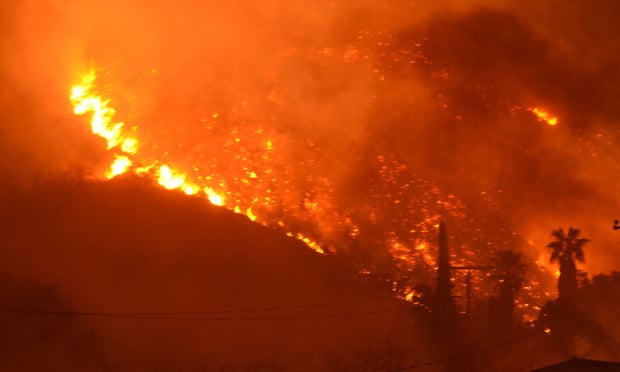Last winter, Boston lay somewhere under a mountain of snow, a record-breaking 108.6 inches, making the 2014-2015 season the all-time snowiest on record. Diagonally at the opposite end of the country, California suffered through its worst drought in history.
Yes, the weather outside is frightful, but even more to the point, it is perplexing. In 2015, Boston at Christmastime was basking in sunshine and warm temperatures, while California was enjoying the first rainstorms delivered by one of the strongest El Niño climactic changes ever recorded.
I'm bringing up the weather not because it's everyone's favorite topic of conversation. Mother Nature's caprices are temperamental, posing the possibility of an uptick in property losses for homeowners. Today's weather-related risks, as we've all come to learn, also are atypical and unwieldy, as Bostonians learned to their profound regret last year.
Rob Erdmann, an insurance agent who specializes in servicing high-net-worth clients in the New England region, recalled the extremely unusual winter storms that clients endured in 2014-2015. “I had numerous clients calling daily,” said Erdmann, president and CEO of Felton, Berlin & Erdmann Insurance Services Inc. “One called me on a Saturday to say there was water cascading out of the light fixture in the living room. She lived in a mansion and had an ice dam on the roof.”
An ice dam is caused when heat from inside the home melts snow on the roof, and the resulting water runs down the slope until it reaches the edge and freezes. Then when the snow further melts, the water backs up beneath the shingles and drips down the walls and creeps across ceilings. This water damage can also lead to another problem: black mold caused by retained moisture. While icicles hanging off the roof can be a pretty picture, they are also a sign that the home has an increased potential for damage because of ice damming.
“The insurers I work with offer the most comprehensive coverage for these types of scenarios, and we had six-figure claims that were fully covered,” Erdmann said. “Consequently, I received many referrals from current clients who were satisfied with their claims treatment. The referrals, on the other hand, were not satisfied with their insurer's claims handling, and they called to express their frustration that they were with a B-rated insurer that treated them like a B-rated citizen.”
Woes of global climate patterns
Some climatologists who study the effect of global climate patterns on local weather conditions believe that local weather is affected by the variations in large patterns of regional atmospheric pressure and sea surface temperatures as well as the weather patterns associated with El Niño. In addition, some areas that generally experience rainy weather may receive more of it, and those regions with dry conditions may experience more pronounced droughts.
The challenge is that these are general expectations, not specific enough to warn homeowners and businesses of what will occur weather-wise next month, much less next year.
What is certain is that change is inevitable, and Mother Nature may be more unpredictable than she has shown us in the past.

Someone with a multimillion-dollar home surrounded by trees and shrubs needs to insure it with a carrier that will help prevent a loss. (Photo: iStock)
Some regions may get a break from her whims, whereas others may be in store for a full-scale “catastrophe,” a term defined by the Insurance Information Institute as meaning insured claims exceeding $25 million and affecting a certain number of policy holders and insurance companies.
A case in point is catastrophic hurricanes, a frequent cause of major insured property losses from Texas to Florida to Maine. Over the past three and a half years, hurricane frequency and severity have been low. Last year's winter storm losses in the Northeast more than made up for the quiet hurricane season, however. Total insured losses were $3.2 billion, while overall economic losses were $4.3 billion, according to insurance-industry sources.
Related: Here are 10 ways to prepare for a wildfire
On the other side of the nation, severe droughts took a financial toll on regional farmers and municipalities, and resulted in a fierce fire season. The Sacramento Bee reported that Northern California's Valley and Butte wildfires in September displaced more than 20,000 people and caused over $2 billion in damages, and about $800 million in damages not covered by insurance.
To understand and address these financial exposures requires specialized assistance from insurance agents like Erdmann, who can provide clients with superior insurance protection and counsel.
The views are awesome
While these various concerns confront all homeowners, they grow in scope with regard to the homes of the wealthy. Affluent people tend to build pricey homes in places that are more prone to weather-related disasters — along coastlines with a higher risk of major storms and rising seawater levels, and in wooded mountains everywhere.
The latter is particularly problematic in the West, due to the region's extended drought conditions. “Someone with a multimillion dollar home surrounded by trees and shrubs needs to insure it with a carrier that will help prevent a loss. For example, these carriers provide access to wildfire protection services that help homeowners mitigate risk if their area is threatened by a wildfire,” said Erdmann. “If you haven't been getting this service or the right advice on how to prepare for different weather risks, you're with the wrong carrier.”
Having a specialized insurance carrier is important, but so is having an agent like Erdmann who will sit down with clients and lay out their susceptibility to natural disaster losses, offering input on how to reduce these risks, and providing access to the appropriate insurance carriers with the knowledge and appetite to absorb these exposures. In the case of ice damming, once the snow starts, it may be too late, but there are preventive measures that can be taken prior to a loss, such as making sure your attic is sufficiently insulated and appropriately ventilated. In addition, there are several commercially available products that can be installed to further protect a home from ice dam problems such as ice melt roof systems or roof heat cables.
Unfortunately, too many people learn this importance too late. Erdmann recalled, “Last winter, a long-standing client had to leave their home for the entire summer because of terrible mold conditions throughout their house after the winter snowstorms. They were grateful that they had the right insurance program, which included mold remediation coverage, to help cover their losses.”
On the bright side, so far it doesn't look likely that Boston will experience a repeat of last year's winter snowstorms (fingers crossed). “On Christmas Day, it was 65 degrees here,” said Erdmann. “There weren't two flakes of snow to rub together. Not that anyone has forgotten just how bad things can quickly become.”
Case in point, in late January, Mother Nature brought a blizzard to much of the East Coast, leaving a heavy blanket of snow behind her and proving once again that she is often unpredictable.
Related: Protecting clients' high-value homes from winter cold
Please give us a Like on Facebook!
Want to continue reading?
Become a Free PropertyCasualty360 Digital Reader
Your access to unlimited PropertyCasualty360 content isn’t changing.
Once you are an ALM digital member, you’ll receive:
- Breaking insurance news and analysis, on-site and via our newsletters and custom alerts
- Weekly Insurance Speak podcast featuring exclusive interviews with industry leaders
- Educational webcasts, white papers, and ebooks from industry thought leaders
- Critical converage of the employee benefits and financial advisory markets on our other ALM sites, BenefitsPRO and ThinkAdvisor
Already have an account? Sign In Now
© 2025 ALM Global, LLC, All Rights Reserved. Request academic re-use from www.copyright.com. All other uses, submit a request to [email protected]. For more information visit Asset & Logo Licensing.








